Nuclear Waste Pond Monitoring with EXO Instruments
Following a rigorous assessment period, EXO water quality monitoring sondes are being deployed in what is arguably one of the most hostile environments imaginable – nuclear waste legacy storage ponds at the Sellafield nuclear reprocessing site in Cumbria, UK.
Background
One of the major challenges facing Sellafield Ltd is the safe decommissioning of the First Generation Magnox Storage Pond (FGMSP), a nuclear fuel storage facility that was originally built in the 1950s and 1960s as part of the UK’s expanding nuclear program to receive and store, cool irradiated Magnox fuel prior to reprocessing. In the 1970s, there was an increase in fuel corrosion and radiation levels. This was due to a lengthy shutdown at the Magnox Reprocessing Plant, combined with increased throughput of fuel related to electricity shortages, and spent fuel was stored in the pond for longer than intended.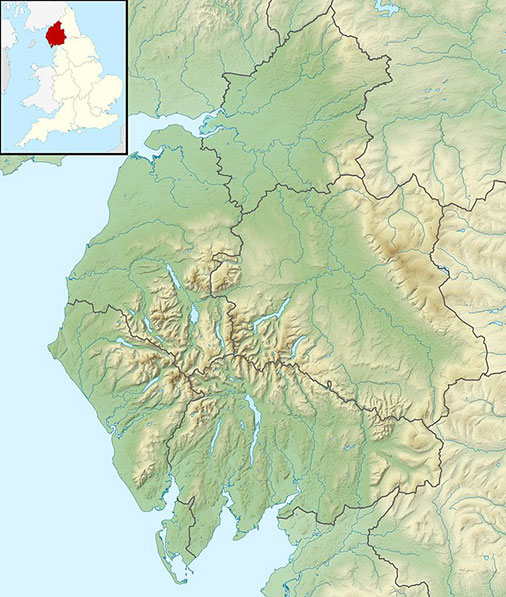
Over the years the pond has accumulated significant quantities of waste materials, sludge from corrosion of fuel cladding, skips of fuel, fuel fragments and other debris which has blown into the pond.
Standing above ground, this 5 m (16 ft) deep open pond holding some 14,000 cubic meters of contaminated water (approximately the size of two Olympic swimming pools) is considered a decommissioning priority.
To assist with future retrievals, detailed knowledge of the facility’s inventory through visual inspection of the pond is needed. Despite high levels of radioactivity, this open pond appears to intermittently bloom with a range of microorganisms that cloud the water, reducing visibility and hampering inspection and retrieval operations.
Sellafield Ltd is the company responsible for safely delivering decommissioning, reprocessing, and nuclear waste management activities on behalf of the Nuclear Decommissioning Authority (NDA), and a project team led by Xavier Poteau has specific responsibility for transferring monitoring technologies to the FGMSP pond.
Water passing through the pond reaches the Sellafield Ion Exchange Effluent Plant (SIXEP) which removes radioactivity from liquid feeds in a number of plants across the Sellafield site. The plant settles out and filters solids using a carbonation process to neutralize the alkaline pond water and then employs ion exchange to remove radionuclides.
Why Monitor?
Water samples are routinely collected from the pond for laboratory analysis, and analytical data is reported to the Environment Agency (EA) and the NDA. In addition to this regulatory requirement, water quality data is also required to inform the efficient operation of SIXEP and to ensure that legacy fuel is stored in optimal conditions. For example, the water is caustically dosed to maintain a pH of around 11.5 which reduces the speed of nuclear fuel degradation.
Water Monitoring Challenges
As a result of physical restrictions, it has only been possible to take water samples from specific locations around the edge of the pond, and, being radioactive, routine samples have to be limited to about 100 mL to be within laboratories' guidelines. Sampling is also an arduous, time-consuming process; two people have to be involved and each sampler has to wear a PVC suit and facemask, two pairs of PVC waterproof gloves, and a pair of Kevlar gloves to ensure that the gloves are not accidentally punctured. The samplers are also only allowed to be close to the pond for a limited time.
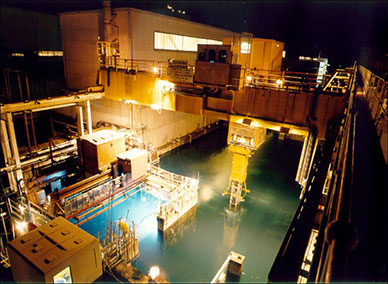
Instrumentation might appear to be the obvious solution, but again, there are several challenges, not least of which is that gamma spectrum analysis has to be conducted on a sample in a lab. In addition, electrical instruments often fail in a radioactive environment, so the general assumption is that they will do so unless proven otherwise.
Continuous monitoring probes, similar to those employed by the water industry, are not feasible because of the wiring that would be required. However, portable instruments offer the potential to reduce the volume and frequency of water sampling.
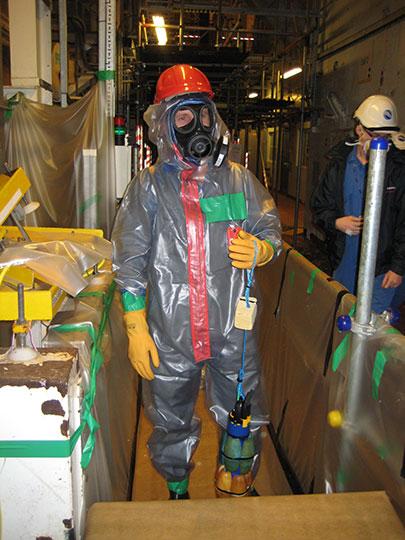
Trials with EXO Sondes
The EXO2 sondes are multiparameter 6-port water quality monitors that have been developed for remote, long-term monitoring applications. Employed globally by regulatory authorities, researchers, industrial companies, and those responsible for the protection of water resources, the EXO sondes are the result of many years of development and feedback from thousands of users from all over the world.
As a result, these instruments are lightweight and rugged, with internal batteries and data logging capability for long-term monitoring applications. The EXO sondes operate on extremely low power and incorporate a range of features that minimize maintenance requirements and avoid biofouling. For example, wet-mateable connectors resist corrosion; components are isolated to prevent short-circuits; welded housings and double o-rings prevent leaks, and high-impact plastic and titanium resist impact damage.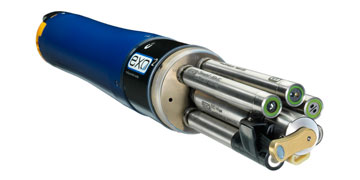
“...EXO sondes have performed very well ‘off the shelf’ [in a radioactive environment] which is a sign of good design.”
The smart EXO sensors are easily interchangeable and users are able to select the sensors that best meet their needs. (Learn more, Advantages of Smart Sensors and Ports on Water Quality Sondes).
The FGMSP project team, for example, uses sensors for pH, temperature, conductivity, turbidity, fDOM (Fluorescent Dissolved Organic Matter – a surrogate for Colored DOM), Blue-green Algae, and Chlorophyll.
Initially, the FGMSP project team trialed an extended deployment version of the YSI 6600 multiparameter water quality monitoring sonde – a predecessor of the EXO. “This enabled us to assess the quality of the YSI sensors and demonstrate that they were able to operate well in a radioactive environment,” comments Technical Specialist Marcus Coupe, adding: “The launch of the EXO was of great interest to us because, with Bluetooth communications and smart sensors that retain their calibration data, the EXO offered an opportunity to dramatically reduce time spent at the pond.
“The launch of the EXO was of great interest to us because...[it] offered an opportunity to dramatically reduce time spent at the pond.”
“The snap-on probes are calibrated in the laboratory and can then be quickly and simply swapped with those that have been deployed on an EXO sonde. This means that the main part of the sonde can be left onsite while the sensors are quickly swapped, and the Bluetooth comms enable us to collect 18,600 sets of data in less than 20 minutes.”
Commenting further on the success of the EXO trials, Xavier Poteau says: “It has been a common experience in the nuclear industry to have to apply significant adaptations to electrical equipment so that it is able to function correctly in a radioactive environment, and this can incur a heavy cost and time penalty. However, the EXO sondes have performed very well ‘off the shelf’ which is a sign of good design.”
As part of their work with the EXO sondes, the FGMSP project team has deployed an EXO sonde with a submersible remotely operated vehicle (ROV). This enabled the team to monitor water quality at previously unachievable locations. “Any loss of visibility in the pond can potentially cause a significant risk to operations within the legacy ponds, as well as potentially slowing down future retrievals, so the ability to deploy an EXO with an ROV offers a valuable insight into understanding the challenge, and moves us from single-point sampling to a more 3D-like data stream,” adds Marcus Coupe.
Looking Forward
Neill Cornwell from Xylem Analytics has been involved with the trials at Sellafield from the start. He says: “A lot of hard work has gone into the process of demonstrating EXO’s suitability for deployment in the nuclear sector; not only has the equipment had to perform well in challenging conditions, but we have also had to demonstrate a high level of technical and service support.
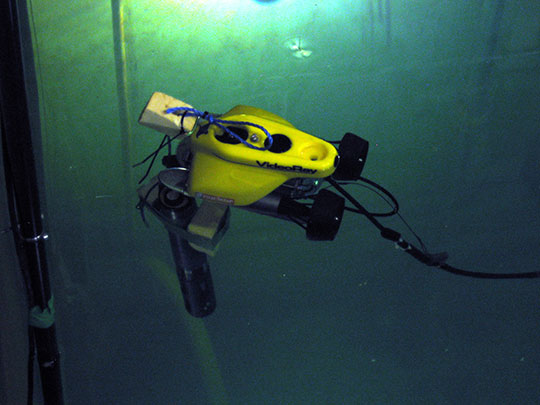
“Naturally, we are very pleased that the sondes have performed so well, and further instruments are now being deployed in other applications at the Sellafield site. For example, a slimmer version of the EXO, the EXO1, is being used to monitor the effluent distribution tanks because the only access is via narrow pipes and the EXO1 is ideal because its outer diameter is just 1.85 inches.”
The data from the FGMSP sondes compare favorably with the results of laboratory analysis, so Xavier Poteau believes “a high level of confidence is being established in the EXO data and this means that we will be able to reduce the amount of sampling that we undertake, which will save a great deal of time, hassle and money.
“I strongly believe that our experience could be beneficial to the wider audience as well as the nuclear industry.”
Special thanks to Sellafield Ltd. for information supplied in this story including photography.

Additional Blog Posts of Interest:
5 Tips to Prevent Costly Mistakes with Your Sondes | Tip 1 of 5
YSI Expert Tip 1 of 7 - Get Your Water Quality Sonde Field Ready
5 Easy Steps: Replacing the Optical DO Sensor Cap on YSI EXO Sondes
Advantages of Smart Sensors and Ports on Water Quality Sondes